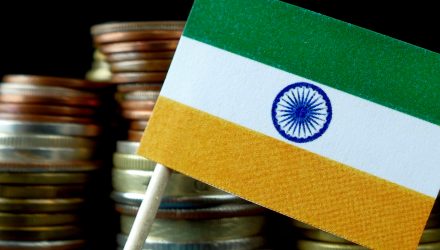For investors looking for opportunities in India, INDL seeks daily investment results worth 300% of the daily performance of the MSCI India Index. INDL invests in securities of the index, which is designed to measure the performance of the large- and mid-capitalization segments of the Indian equity market, covering approximately 85% of the Indian equity universe.
With the rupee experiencing its doldrums this year, India could present investors with discounted opportunities that could benefit INDL if the country’s central bank is able to shore up its local currency. Just today, the Reserve Bank of India announced it would inject 120 billion rupees or US $2.1 billion into its financial system through the purchase of government bonds.
INDL is currently up 0.58% as of 2:45 p.m. ET.
High-Yield Debt Exposure to Emerging Markets
While emerging markets have been roiled by ongoing trade wars this year, there are still opportunities abound for investors seeking value and one of those areas is within emerging markets debt through the VanEck Vectors Emerging Markets Local Currency Bond ETF (NYSEArca: EMLC).
The rough year in emerging market is evident in ETFs, such as the Vanguard FTSE Emerging Markets ETF (NYSEArca: VWO)–down 8.91% YTD, iShares Core MSCI Emerging Markets ETF (NYSEArca: IEMG)–down 8.24% YTD and iShares MSCI Emerging Markets ETF (NYSEArca: EEM)–down 8.31% YTD.
However, investors who are hesitant by the red prices in emerging markets ETF should view them as substantial markdowns, especially the U.S. and China settle their trade differences. With respect to value compared to price, many of these ETFs from abroad could present a profitable opportunity for investors, such as those in emerging markets debt in EMLC.
“We’re seeing some pretty significant inflows back into EM local,” William Sokol, ETF Product Manager at VanEck, told ETF Trends. “It’s obviously been a tough year, but for a variety of reasons, we have investors coming back into this space.”
“Local yield are now 7.2%, which is significantly higher than where we started the year,” added Sokol. “I think you look at that in the context of fundamentals and there’s clearly some countries that are in the headlines and some that continue to be like Turkey that are suffering from certain political or economic issues, but overall, fundamentals still are relatively healthy especially compared to past periods where there have been sell-offs in EM.”
For more market news, visit ETFTrends.com.








